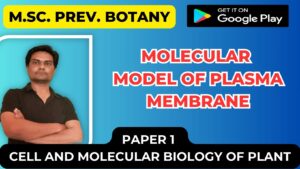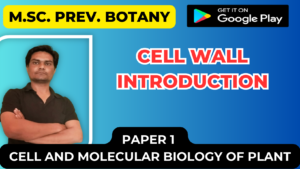In the sections that follow, we will examine some of the following techniques of recombinant DNA technology and see how they are used to create recombinant DNA molecules: (1.) Methods for locating specific DNA sequences, (2.) Techniques for cutting DNA at precise locations, (3.) Procedures for amplifying a particular DNA sequence billions of times, producing enough copies of a DNA sequence to carry out further manipulations, (4.) Methods for mutating and joining DNA fragments to produce desired sequences and (5.) Procedures for transferring DNA sequences into recipient cells. The key development that made recombinant DNA technology possible was the discovery in the late 1960s of restriction enzymes (also called restriction endonucleases) that recognizes and make double-stranded cuts in the sugar–phosphate backbone of DNA molecules at specific nucleotide sequences. These enzymes are produced naturally by bacteria, where they are used in defense against viruses. In bacteria, restriction enzymes recognize particular sequences in viral DNA and then cut it up. A bacterium protects its own DNA from a restriction enzyme by modifying the recognition sequence, usually by adding methyl groups to its DNA. Table 5.3: Types of restriction enzymes Three types of restriction enzymes have been isolated from bacteria (Table 5.3). Type I restriction enzymes recognize specific sequences in the DNA but cut the DNA at random sites that may be some distance (1000 bp or more) from the recognition sequence. Type III restriction enzymes recognize specific sequences and cut the DNA at nearby sites, usually about 25 bp away. Type II restriction enzymes recognize specific sequences and cut the DNA within the recognition sequence. Virtually all work on recombinant DNA is done with type II restriction enzymes; discussions of restriction enzymes throughout this book, refers to type II enzymes. More than 800 different restriction enzymes that recognize and cut DNA at more than 100 different sequences have been isolated from bacteria. Many of these enzymes are commercially available; examples of some commonly used restriction enzymes are given in Table 5.3. Each restriction enzyme is referred to by a short abbreviation that signifies its bacterial origin. The sequences recognized by restriction enzymes are usually from 4 to 8 bp long; most enzymes recognize a sequence of 4 or 6 bp. Most recognition sequences are palindromic – sequences that read the same forward and backward. Notice in Table 5.3 that the sequence on the bottom strand is the same as the sequence on the top strand, only reversed. All type II restriction enzymes recognize palindromic sequences. Some of the enzymes make staggered cuts in the DNA. fig 5.7 For example, HindIII recognizes the sequence as given in figure 5.7, HindIII cuts the sugar-phosphate backbone of each strand at the point indicated by the arrow, generating fragments with short, single-stranded overhanging ends: Such ends are called cohesive ends or sticky ends, because they are complementary to each other and can spontaneously pair to connect the fragments. Thus DNA fragments can be “glued” together: any two fragments cleaved by the same enzyme will have complementary ends and will pair (Figure 5.8). When their cohesive ends have paired, two DNA fragments can be joined together permanently by the enzyme DNA ligase, which seals nicks between the sugar–phosphate groups of the fragments. Not all restriction enzymes produce staggered cuts and sticky ends. PvuII cuts in the middle of its recognition site, producing blunt-ended fragments: Fragments with blunt ends must be joined together in other ways. Restriction enzymes make double-stranded cuts in the sugar–phosphate backbone of DNA, producing cohesive, or sticky, ends The sequences recognized by a restriction enzyme occur randomly within genomic DNA. Consequently, there is a relation between the length of the recognition sequence and its frequency of occurrence: there are fewer long recognition sequences than short sequences because the probability of all the bases being in the required order is less. Restriction enzymes are the workhorses of recombinant DNA technology and are used whenever DNA fragments must be cut or joined. In a typical restriction reaction, a concentrated solution of purified DNA is placed in a small tube with a buffer solution and a small amount of restriction enzyme. 5.95.9 b Figure 5.9: The number of restriction sites is related to the number of fragments produced when DNA is cut by a restriction enzyme. The reaction mixture is then heated at the optimal temperature for the enzyme, usually 37o C. Within a few hours, the enzyme cuts all the restriction sites in the DNA, producing a set of DNA fragments (Figure 5.9). Restriction enzymes can cut linear as well as circular both type of DNA (Figure 5.10). DNA fragments obtain by the action of restriction enzyme can further use for gel electrophoresis and cloning purpose (Figure 5.11). 5.10a 5.10 bc DNA fragments can be inserted into the plasmid by 3 methods (a) restriction cloning (b) cloning by tailing and (c) cloning by using linkers, in each method restriction enzyme again play important role (Figure 5.11). Thus restriction enzymes are major components of restriction techniques.Restriction Techniques
Restriction (Recombinant DNA) Techniques
Cutting and Joining DNA Fragments –



